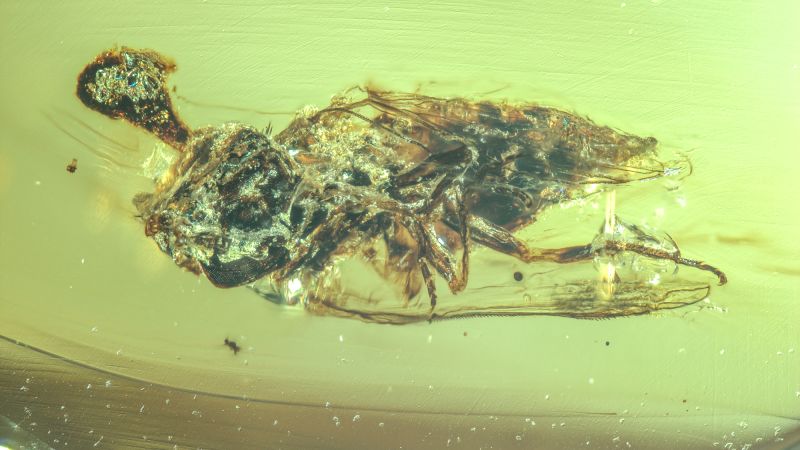
BEIJING – A groundbreaking discovery has emerged from the depths of time, as scientists have unearthed a 99 million-year-old piece of amber encapsulating a fly overtaken by a parasitic fungus. This remarkable find offers a glimpse into the ancient world where such parasitic relationships were already in play.
Breaking: Ancient Parasite Preserved
The amber, which encased the fly along with a second specimen of an ant in its pupal stage, showcases the complex interactions within prehistoric ecosystems. According to Yuhui Zhuang, a doctoral student at the Institute of Paleontology at Yunnan University, these specimens reveal the ancient dynamics where fungal parasites preyed on insects.
The amber provides evidence of one of the oldest known examples of a fungal parasite hijacking an insect’s body before ultimately leading to its demise.
Immediate Impact
This discovery not only sheds light on the evolutionary history of parasitic fungi but also raises questions about their role in ancient ecosystems. The amber specimens could help scientists understand whether these fungi are the ancestors of modern parasites that affect today’s insects.
Key Details Emerge
The fly and ant, preserved in their amber tomb, lived alongside dinosaurs, suggesting that parasitic fungi have been influencing insect behavior for millions of years. This find highlights the intricate relationships that existed long before humans walked the Earth.
Industry Response
Researchers and paleontologists are excited about the potential insights this discovery could provide. The specimens offer a rare opportunity to study the evolutionary history of parasitic fungi and their impact on insect hosts.
By the Numbers
- 99 million years: Age of the amber containing the parasitic fungus.
- 2 specimens: Fly and ant encased in amber.
- 1st time: Such an ancient parasitic relationship has been documented.
What Comes Next
The discovery of these ancient parasites opens the door for further research into the evolutionary history of fungi and their interactions with insects. Scientists hope to compare these ancient specimens with modern fungi to trace their evolutionary lineage.
Background Context
The inspiration for the popular video game and TV series “The Last of Us” stems from the real-life Ophiocordyceps fungus, known for its ability to control the minds of ants. This recent discovery underscores the long-standing presence of such mind-controlling parasites in the natural world.
Expert Analysis
Experts believe that studying these ancient specimens could provide valuable insights into how parasitic fungi have adapted and evolved over millions of years. Understanding these dynamics could also enhance our knowledge of current ecosystems and the role fungi play within them.
Regional Implications
The findings from this discovery are expected to influence paleontological research in the region, encouraging further exploration of amber deposits in Asia. This could lead to more groundbreaking discoveries about ancient life on Earth.
Timeline of Events
- 99 million years ago: The fly and ant were trapped in amber.
- 2023: The discovery of the amber specimens was announced.
- Future: Ongoing research to trace the evolutionary history of parasitic fungi.
As scientists continue to study these ancient specimens, the implications for understanding the evolution of parasitic relationships in nature are profound. This discovery not only enriches our knowledge of the past but also informs our understanding of the present and future of ecological interactions.







